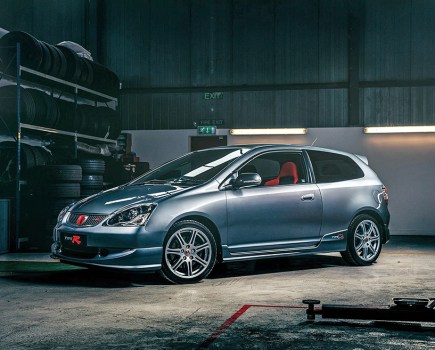Looking for a Ford Racing Puma Buyers Guide? Well read on…
Launched with an awesome Steve McQueen/Bullitt inspired TV advert, it wasn’t long before the world knew about the fine handling that Ford had achieved with the Puma. The quirky looking car was quite radical in many ways and, despite attracting plenty of female fans, hardened car hacks fell for the Puma’s charms just as hard.
Then in 1999, the Ford Rally specialist team at Boreham pulled out what looked like the trump card with the limited edition Ford Racing Puma. There were 500 of the Imperial Blue beauties built by Tickford and they offered 155bhp from the tuned 1.7ltr Zetec-S engine, wider arches and track all round, rear disc brakes with Alcon 4-pots up front, 17in Speedline alloys and blue Alcantara trim inside with matching Sparco seats. It was very much the ‘man’ version of the Puma.
However, they didn’t sell brilliantly, which may have been down to the fact that a new Impreza at the time could offer 4WD, more turbocharged power and a price tag a good few grand under the FRP’s. Despite being a special edition and allowed to wear the hallowed Imperial Blue paint of the Escort Cosworth and Focus RS, buyers clearly didn’t feel the Puma’s performance was special enough to warrant the price tag.

Even looking at today’s prices, an FRP doesn’t command the same kind of premium that those Escorts did years after they were produced, but that doesn’t mean they aren’t sought after. Buyers are still attracted by the looks, the handling and the fact that it’s a very rare model. That last point means that there are some purists buying them, restoring them to mint condition and wrapping them up in cotton wool.
However, cheaper ones are available for those who actually want to use their FRP and they’re a good value way into a great looking and fun-to-drive small coupe. The only thing they lack now, especially if you’re planning any trackdays in one, is a boost in power – an operation that’s perhaps easier said than done. Considering the FRP’s 1.7ltr engine is already a tuned version of the standard Puma’s 1.7ltr (unleashing an extra 30bhp), any decent gains will cost you big money. But if you can stretch to it and squeeze around 200bhp from the Puma then you could be onto a real winner.

Ford Racing Puma 1999-2000
Engine: 1.7ltr
Zetec Power: 152bhp
0-62mph: 7.9secs
Top speed: 126mph

BUYING A FORD RACING PUMA
Considering how well FRPs have held their value, it’s not unknown for people to build replicas out of damaged standard models. Check the number of the FRP you’re looking at (from 1 to 500) is stamped on the inlet manifold and the original owner’s certificate is present. There are a few areas worth looking at too, such as rust around the rear chassis and arches (a problem with standard Pumas), while the wide arches can attract stonechips.
On a test drive, watch out for stalling at junctions due to a dirty idle control valve or failing TPS sensor. You may find the front brakes squeak, but this is just a quirk of the FRP and nothing to worry about. Also, check the engine bay isn’t Imperial Blue as only the few press cars had colour-coded bays. If the one you’re looking at does, it may have been involved in a shunt before. For more advice check out the Racing Puma Owners Club.

TUNING A FORD RACING PUMA
Only around 80 of the 500 produced opted for the £1,000 factory LSD extra, and while it may help a little, it’s not essential with this level of power unless you’re building a track car. Polybushes are a good first upgrade to regain the original tautness of the handling and Ford Racing offered stiffer Eibach dampers, which again are a good choice if you’re going to be aiming at track.
Aside from that, there’s not much to improve, although if you want more power it’s going to involve a built engine and throttle bodies or something like a Duratec conversion from a company such as Pumaspeed. Both options may get you around the 200bhp mark, but at a cost.












